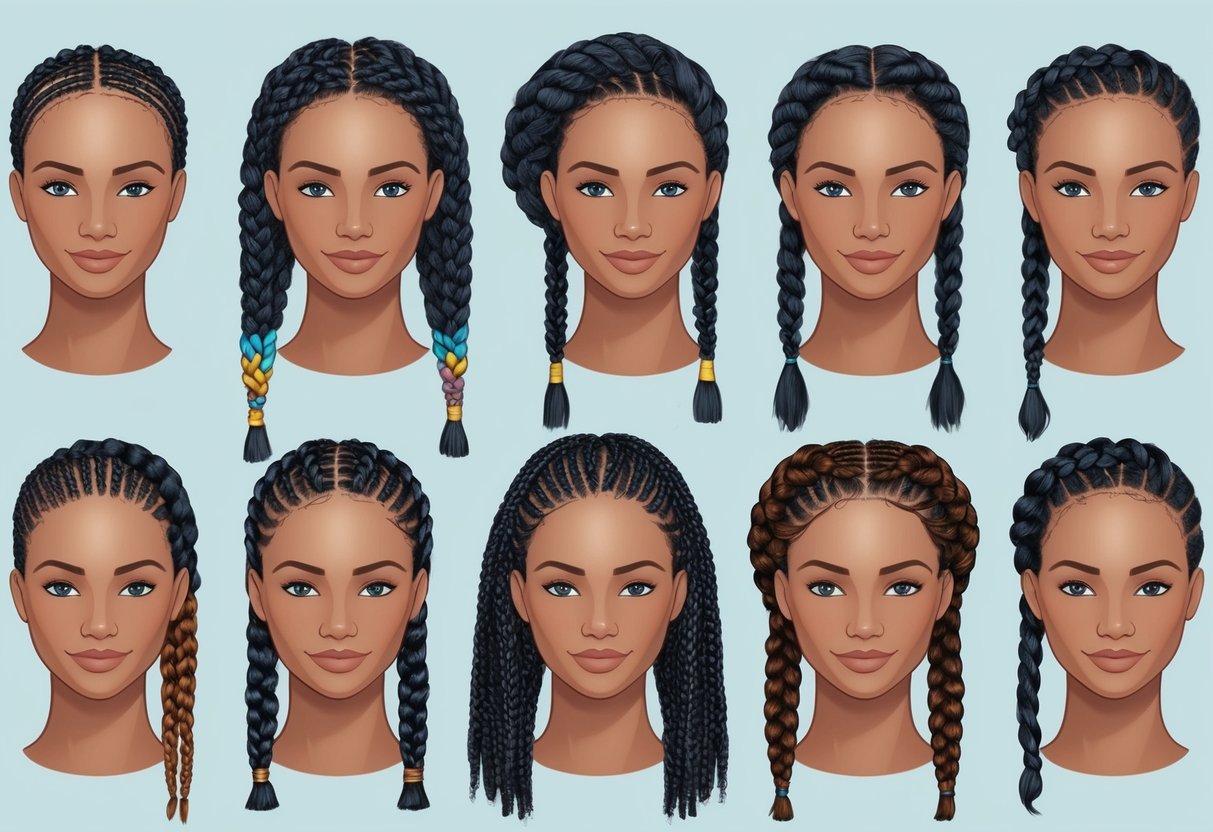
When looking for the best protective braid styles for all hair types, it’s important to consider options that not only look great but also help maintain strong, healthy hair. Protective braid styles like box braids, cornrows, and twists can shield strands from damage and minimize daily manipulation, promoting length retention and supporting hair growth.
With proper care, these styles work well for straight, wavy, and curly hair textures. Each provides flexibility and durability for various lifestyles.
People interested in maximizing the life of their braids can benefit from essential tips on installation, maintenance, and scalp care. Choosing styles such as feed-in braids or rope twists, and taking steps to protect ends, can keep hair safeguarded for weeks at a time while reducing breakage and split ends.
For more details on how these styles work for different hair types, check out these protective hairstyle recommendations and expert tips.
What Are Protective Braids?
Protective braids refer to specific braid styles designed to shield hair from breakage, dryness, and environmental stress. These styles involve weaving natural hair into patterns that help retain moisture and growth while minimizing daily manipulation.
Benefits of Protective Braiding
Protective hairstyles, especially braids, offer several crucial advantages for all hair types. By keeping ends tucked away, these styles help reduce split ends, decrease tangling, and prevent mechanical damage from brushing and heat styling.
A major benefit for people with natural hair is moisture retention. Braided protective styles limit exposure to harsh elements, helping hair stay hydrated.
Well-maintained braids also support length retention because they minimize breakage and stress at the roots and tips. Protective braids can promote low-maintenance routines.
With styles like box braids, knotless braids, or goddess braids, hair doesn’t require daily detangling or manipulation. This saves both time and effort while promoting healthier growth.
Protective Styles vs. Other Hairstyles
Protective styles like braids are different from regular hairstyles because they are specifically created to protect the hair’s ends and decrease the need for daily styling. In contrast, styles such as ponytails, buns, or loose hair may leave the ends exposed and subject to friction, weather, or heat damage.
Many non-protective hairstyles require frequent combing, straightening, or heat use, putting stress on fragile strands. Protective braids, including box braids, twists, and cornrows, help keep hair tucked away, reducing breakage and promoting a healthier scalp.
They tend to last for weeks if installed and cared for properly, unlike temporary styles with more manipulation. For those looking to maximize hair health, especially with natural hair, protective braids offer a practical and effective solution.
Choosing the Best Protective Braid Styles for Different Hair Types
Selecting the right protective braid style depends on hair texture, thickness, and the desired maintenance level. Properly matched braid styles can help retain hair length, minimize breakage, and support overall hair health.
Protective Braids for Curly Hair
Curly hair benefits from braid styles that keep strands separated while reducing frizz and tangling. Styles such as goddess braids, knotless box braids, and Senegalese twists are popular because they tuck in the ends and prevent moisture loss.
These styles help preserve the natural curl pattern when taken down. To reduce stress on the scalp and roots, it’s best to avoid braids that are too tight.
Maintaining hydration is also essential, so using a light oil or leave-in conditioner before braiding can help retain moisture. Curly hair tends to shrink with braiding, so stretch the hair gently before styling.
Avoid using heavy extensions to prevent excess tension.
Protective Styles for 4c Hair
4c hair is prone to dryness and breakage due to its tight coil pattern. Protective braid styles designed for this texture, such as mini braids, Marley twists, box braids, and cornrows, allow for low-manipulation care while keeping the ends sealed and reducing moisture loss.
These styles work for both short and long lengths.
Key tips for 4c protective braiding:
- Keep braids medium-sized to prevent tension spots.
- Moisturize the hair and scalp regularly.
- Cleanse the scalp gently between styles.
- Avoid leaving braids in too long—6-8 weeks is a safe limit.
These practices help maintain definition and avoid matting. For more information about these styles, review this guide to protective hairstyles for natural hair.
Options for Fine and Straight Hair
Fine or straight hair needs protective styling that doesn’t cause breakage at the roots. Smaller, loose braids or flat plaits work well because they prevent slippage while minimizing scalp tension.
Styles like French braids and Dutch braids are ideal as they keep strands tucked in without adding excessive weight. Using lightweight extensions is important if extra length or volume is desired, but it’s best to keep sections even and avoid heavy hair.
Incorporate a gentle, silicone-free leave-in product to provide slip and reduce friction. Braiding fine or straight hair slightly damp can also help preserve the finished look and curb flyaways.
For additional inspiration and techniques, take a look at a variety of braid options for all hair types.



